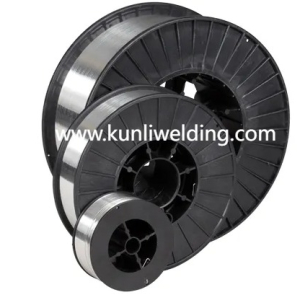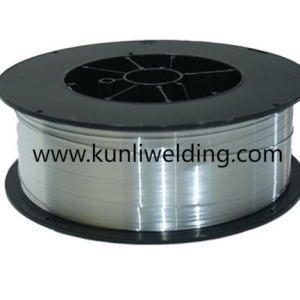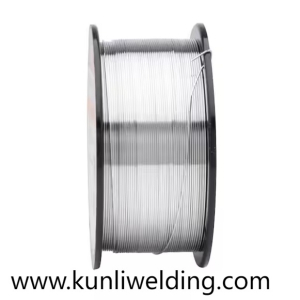When upgrading a MIG setup for aluminum work, experienced shops often consult Aluminum Mig Wire Manufacturers about the best feeding solutions, and spool guns come up as a frequent recommendation for many aluminum applications. As electrification, lightweight vehicle programs and renewable infrastructure projects continue to grow in public focus, choosing the right spool gun can reduce setup time improve feed reliability and keep production moving when weld quality matters under tight schedules.
Spool guns solve a basic mechanical problem. Aluminum wire is soft and tends to bird nest when pushed long distances through a standard feeder liner. A spool gun carries a short length of wire inside the gun head so the feed path is minimal. That mechanical simplicity reduces feeding anomalies and is especially useful in manual work and in tight robotic cells where a long liner would otherwise complicate variable torch positions. Shops that retrofit to aluminum welding often see fewer interruptions when operators use spool guns suited to their wire diameters and spool formats.
Selecting the right model begins with compatibility. Confirm that the spool gun mounts cleanly on your machine that your torch connector supports its current range and that it accepts the spool sizes your preferred wire arrives on. Pay attention to drive roll profiles and contact tip geometry. Drive rolls designed for soft aluminum wire prevent crushing while contact tips made for the chosen diameter reduce burnback and improve arc stability. When procurement teams coordinate these checks with production supervisors they avoid the common mismatch that causes feeding defects during run up.
Ergonomics and duty cycle are practical considerations. Lighter weight spool guns reduce welder fatigue during long welds and make consistent travel easier to maintain. Cooling design matters in high use environments to avoid overheating that degrades performance. If your workflow includes long continuous welds or heavy production hours consider a gun with enhanced cooling or lighter duty head options for intermittent manual use. Matching the gun to the welding rhythm in your shop preserves operator consistency and lowers variation in bead appearance.
Maintenance and spare parts planning keep the system dependable. Replace liners contact tips and drive rolls on a predictable schedule and keep spares on hand so a single worn component does not stop a cell. Clean spool seats and verify spool tension to prevent nesting during high speed passes. When teams document their maintenance cadence and include supplier suggested parts lists the average repair time falls and production disturbance is minimized.
Shielding and parameter tuning remain central even with the right spool gun. A gun does not eliminate the need for proper gas flow nozzle condition and steady travel technique. Use the shielding recommendations that match your wire and joint type and perform short trial passes when changing spool lots. Trial beads let welders and engineers lock in settings that balance penetration and bead profile so finished assemblies meet both structural and cosmetic expectations.
Supplier support and spool format options make a meaningful difference. Manufacturers of aluminum wire that offer compatible spool sizes pre fitted reels and clear handling guidance reduce set up friction. Look for vendors who publish recommended drive roll types and contact tip sizes and who can provide trial reels for shop evaluation. That hands on collaboration shortens qualification periods and lowers initial scrap during process ramp.
Cost considerations include more than the unit price of the gun. Factor in downtime reductions and lower scrap from fewer feeding errors. A gun that reduces stoppages or makes training faster often pays back through steadier throughput. Balance purchase cost with anticipated duty and the supplier s parts support when selecting a model for long term use.
Finally think about future proofing. As projects push for lighter assemblies and more automated processes, spool guns that integrate easily with existing automation and that handle common spool formats will save rework later. When procurement, production and supplier teams evaluate the whole system from spool to arc the result is a robust setup that supports predictable welding quality across shifts and projects.
If your operation is evaluating spool gun options for aluminum MIG work and you want wire that feeds reliably with those guns, reviewing product notes and spool compatibility guidance can help. For product details and handling guidance about aluminum wires suited to spool gun feeding visit the manufacturer product information at this address https://www.kunliwelding.com/product/aluminum-alloy-wire/aluminum-alloy-welding-wire.html .




